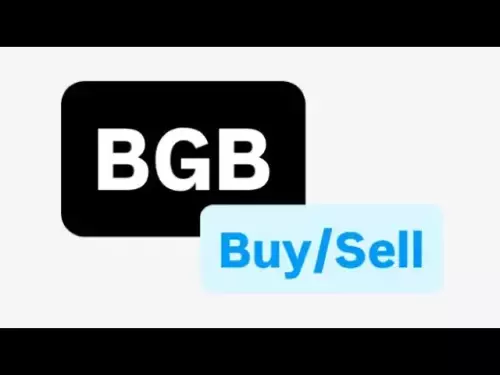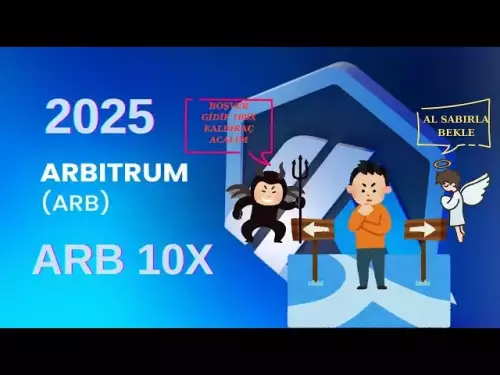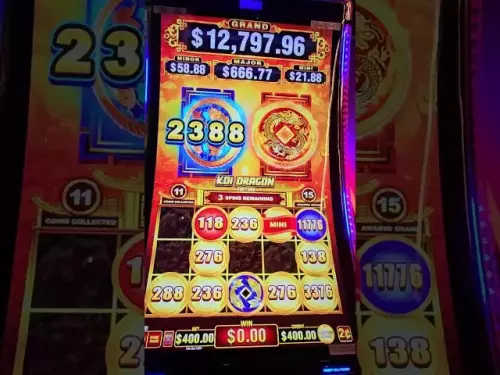-
 Bitcoin
Bitcoin $111000
1.68% -
 Ethereum
Ethereum $4289
-0.42% -
 XRP
XRP $2.830
2.60% -
 Tether USDt
Tether USDt $1.000
-0.01% -
 BNB
BNB $849.8
0.18% -
 Solana
Solana $208.0
4.92% -
 USDC
USDC $0.9999
0.00% -
 Dogecoin
Dogecoin $0.2130
1.23% -
 TRON
TRON $0.3371
0.04% -
 Cardano
Cardano $0.8289
3.22% -
 Chainlink
Chainlink $23.25
3.34% -
 Hyperliquid
Hyperliquid $44.68
3.12% -
 Ethena USDe
Ethena USDe $1.001
0.01% -
 Sui
Sui $3.318
2.93% -
 Bitcoin Cash
Bitcoin Cash $580.2
6.25% -
 Stellar
Stellar $0.3633
2.30% -
 Avalanche
Avalanche $24.40
5.43% -
 Hedera
Hedera $0.2200
3.20% -
 Cronos
Cronos $0.2739
3.94% -
 UNUS SED LEO
UNUS SED LEO $9.551
0.01% -
 Litecoin
Litecoin $111.0
1.76% -
 Toncoin
Toncoin $3.160
1.58% -
 Shiba Inu
Shiba Inu $0.00001235
2.28% -
 Polkadot
Polkadot $3.800
2.85% -
 Uniswap
Uniswap $9.501
1.73% -
 Bitget Token
Bitget Token $5.165
10.67% -
 World Liberty Financial
World Liberty Financial $0.2236
-9.69% -
 Dai
Dai $0.9998
-0.01% -
 Monero
Monero $267.2
2.64% -
 Aave
Aave $313.6
2.60%
How to avoid high gas fees on Trust Wallet?
Gas fees in Trust Wallet vary by network and congestion—adjust settings, choose low-fee chains like BSC or Polygon, and time transactions wisely to save costs.
Sep 03, 2025 at 05:37 am
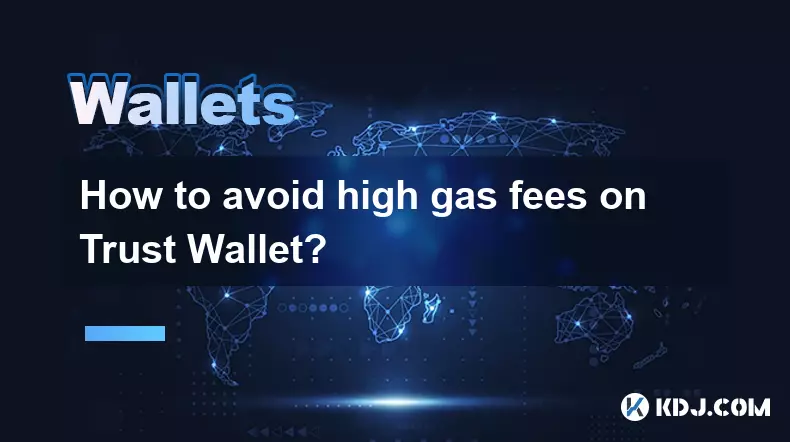
Understanding Gas Fees in Trust Wallet
1. Gas fees are transaction costs paid to miners or validators for processing operations on blockchain networks like Ethereum or Binance Smart Chain. These fees fluctuate based on network congestion and transaction complexity. Trust Wallet, being a non-custodial wallet, interacts directly with these networks, meaning users must manually manage gas settings.
2. Every action—sending tokens, swapping assets, or interacting with dApps—requires gas. The wallet pulls current network data to suggest a fee, but these defaults may not always be optimal. High suggested fees often result from peak usage times or volatile market conditions.
3. Users have control over gas price and limit through advanced settings. By adjusting these parameters, it’s possible to reduce costs significantly, though setting values too low may result in delayed confirmation or failed transactions.
4. Different blockchains have vastly different fee structures. Ethereum is known for high gas fees during congestion, while networks like Polygon, BSC, or Arbitrum offer lower-cost alternatives. Switching networks when feasible can drastically cut expenses.
Strategies to Reduce Gas Costs
1. Use the 'Low' gas preset when available. Trust Wallet often provides options like 'Low,' 'Medium,' and 'High' in transaction confirmation screens. Choosing 'Low' sets a reduced gas price, ideal when network traffic is minimal.
2. Time your transactions during off-peak hours. Blockchain networks experience lower congestion late at night or early in the morning UTC. Conducting swaps or transfers during these windows typically results in lower fees.
3. Manually adjust gas settings in advanced options. Access the gas price (Gwei) and gas limit fields before confirming a transaction. Compare current rates on tools like Etherscan’s gas tracker or GasNow and input competitive yet conservative values.
4. Utilize Layer 2 solutions or alternative chains. When interacting with decentralized applications, opt for versions deployed on Polygon, Optimism, or BSC. These networks offer near-instant transactions at a fraction of Ethereum’s cost.
5. Batch transactions when possible. Instead of executing multiple small operations, consolidate actions—like approving and swapping in one session—using dApp interfaces that support batch calls, minimizing overall gas use.
Choosing the Right Network
1. Trust Wallet supports multiple EVM-compatible chains. Switching from Ethereum to Binance Smart Chain for BEP-20 token transfers can reduce fees from several dollars to under ten cents.
2. Always verify token availability on alternate networks. Not all assets are natively available across chains, and bridging introduces its own costs and risks. Use trusted bridges and confirm liquidity before migration.
3. Set up custom RPCs for unsupported networks. Adding chains like Avalanche or Fantom manually allows access to their low-fee ecosystems. Ensure correct configuration of network parameters to avoid lost funds.
4. Monitor cross-chain transaction tools. Platforms like Stargate or Synapse enable efficient, low-cost transfers between chains with optimized routing, reducing both fees and slippage.
Optimizing dApp Interactions
1. Token approvals contribute to gas usage. Each new token interaction with a dApp requires an approval step. Use tools like Revoke.cash to manage and revoke unused allowances, then re-approve with minimal gas when needed.
2. Some dApps offer gasless transactions via meta-transactions or relayers. These shift the fee burden to the service provider, allowing users to interact without holding native gas tokens.
3. Explore dApps with built-in gas optimization. Protocols like 1inch or CowSwap aggregate trades across venues and settle via shared liquidity, often reducing total gas compared to direct swaps.
Frequently Asked Questions
Q: Can I change the gas fee after sending a transaction?A: No, once a transaction is broadcast, the gas fee is locked. However, on Ethereum, you can replace it with a higher-fee transaction using the same nonce to either speed it up or cancel it.
Q: Why does Trust Wallet sometimes show high fees even on BSC?A: While BSC is generally low-cost, short-term congestion or sudden spikes in validator demand can temporarily raise fees. Always check the current Gwei rate before confirming.
Q: Do hardware wallets integrated with Trust Wallet affect gas fees?A: No, hardware wallets only sign transactions. The gas fee is determined by network conditions and settings in Trust Wallet, not the signing device.
Q: Is it safe to set very low gas prices?A: Setting extremely low prices may cause transactions to remain pending indefinitely or fail. It’s safer to aim slightly below average market rates during low congestion periods.
Disclaimer:info@kdj.com
The information provided is not trading advice. kdj.com does not assume any responsibility for any investments made based on the information provided in this article. Cryptocurrencies are highly volatile and it is highly recommended that you invest with caution after thorough research!
If you believe that the content used on this website infringes your copyright, please contact us immediately (info@kdj.com) and we will delete it promptly.
- Crypto Presales in 2025: Unveiling ROI Opportunities and the Next Big List
- 2025-09-03 18:25:13
- Shiba Inu, Pepe Coin, and Remittix Presale: What's the Buzz?
- 2025-09-03 19:05:14
- XRP Price Watch: Descending Trendline Meets ETF Hopes
- 2025-09-03 18:45:12
- Epstein Files, Trump Crypto, and China's Parade: A Week in the Whirlwind
- 2025-09-03 18:45:12
- Justin Sun, DeFi, and the WLFI Move: A NYC Perspective
- 2025-09-03 19:25:15
- XRP, Gemini, and SEC Clarity: Navigating the Crypto Landscape in 2025
- 2025-09-03 19:45:12
Related knowledge

How to use Trust Wallet's built-in DEX?
Aug 29,2025 at 07:28am
Understanding Trust Wallet’s Built-in DEX1. Trust Wallet integrates a decentralized exchange (DEX) directly within its mobile application, allowing us...
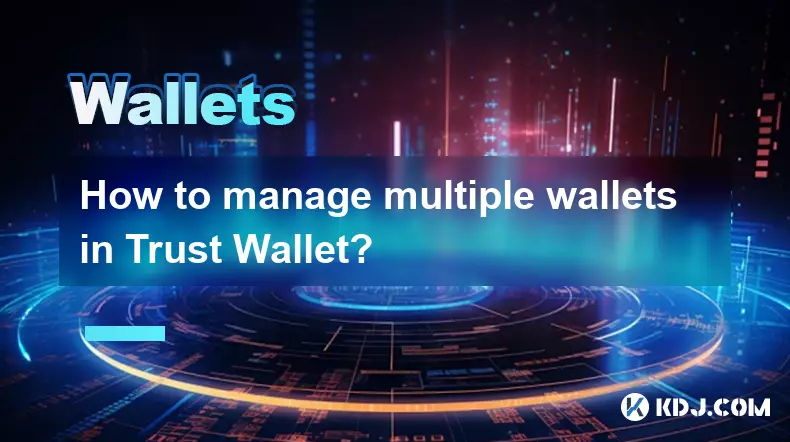
How to manage multiple wallets in Trust Wallet?
Aug 30,2025 at 04:45am
Understanding Wallet Management in Trust Wallet1. Trust Wallet supports a wide range of cryptocurrencies and tokens, allowing users to manage multiple...
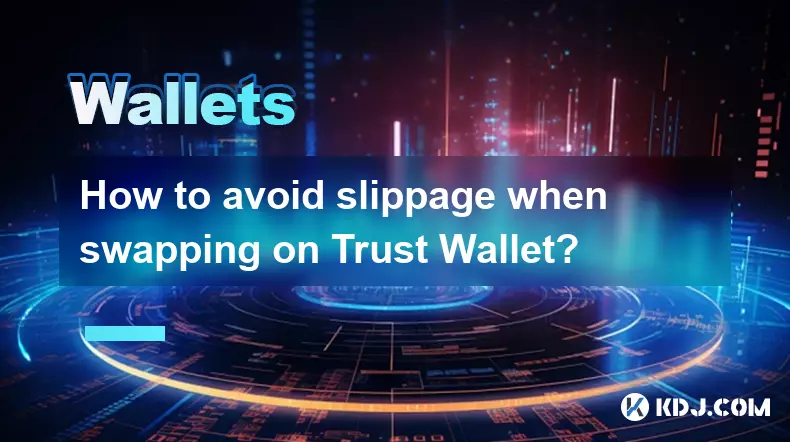
How to avoid slippage when swapping on Trust Wallet?
Aug 29,2025 at 03:01am
Understanding Slippage in Decentralized Exchanges1. Slippage occurs when the price of a cryptocurrency changes between the time a transaction is initi...
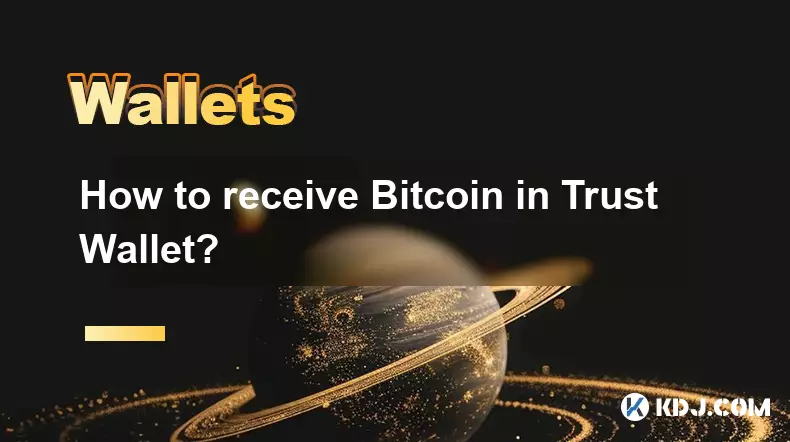
How to receive Bitcoin in Trust Wallet?
Aug 31,2025 at 08:36pm
Understanding Bitcoin Reception in Trust Wallet1. Trust Wallet supports Bitcoin (BTC) as one of its core cryptocurrencies. To receive Bitcoin, users m...

How to send Ethereum from Trust Wallet?
Sep 01,2025 at 01:55pm
Sending Ethereum from Trust Wallet: A Step-by-Step GuideTrust Wallet is one of the most widely used cryptocurrency wallets, especially for users who p...
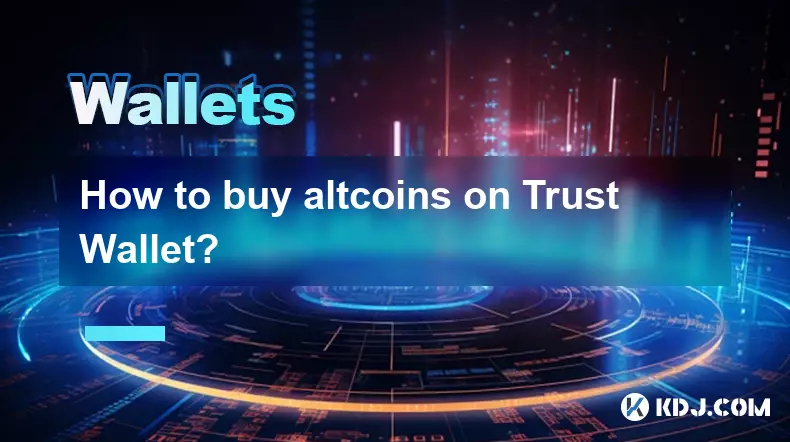
How to buy altcoins on Trust Wallet?
Aug 29,2025 at 11:36pm
Understanding Trust Wallet and Altcoin Purchases1. Trust Wallet is a non-custodial cryptocurrency wallet that supports a wide range of altcoins and bl...

How to use Trust Wallet's built-in DEX?
Aug 29,2025 at 07:28am
Understanding Trust Wallet’s Built-in DEX1. Trust Wallet integrates a decentralized exchange (DEX) directly within its mobile application, allowing us...

How to manage multiple wallets in Trust Wallet?
Aug 30,2025 at 04:45am
Understanding Wallet Management in Trust Wallet1. Trust Wallet supports a wide range of cryptocurrencies and tokens, allowing users to manage multiple...

How to avoid slippage when swapping on Trust Wallet?
Aug 29,2025 at 03:01am
Understanding Slippage in Decentralized Exchanges1. Slippage occurs when the price of a cryptocurrency changes between the time a transaction is initi...

How to receive Bitcoin in Trust Wallet?
Aug 31,2025 at 08:36pm
Understanding Bitcoin Reception in Trust Wallet1. Trust Wallet supports Bitcoin (BTC) as one of its core cryptocurrencies. To receive Bitcoin, users m...

How to send Ethereum from Trust Wallet?
Sep 01,2025 at 01:55pm
Sending Ethereum from Trust Wallet: A Step-by-Step GuideTrust Wallet is one of the most widely used cryptocurrency wallets, especially for users who p...

How to buy altcoins on Trust Wallet?
Aug 29,2025 at 11:36pm
Understanding Trust Wallet and Altcoin Purchases1. Trust Wallet is a non-custodial cryptocurrency wallet that supports a wide range of altcoins and bl...
See all articles























